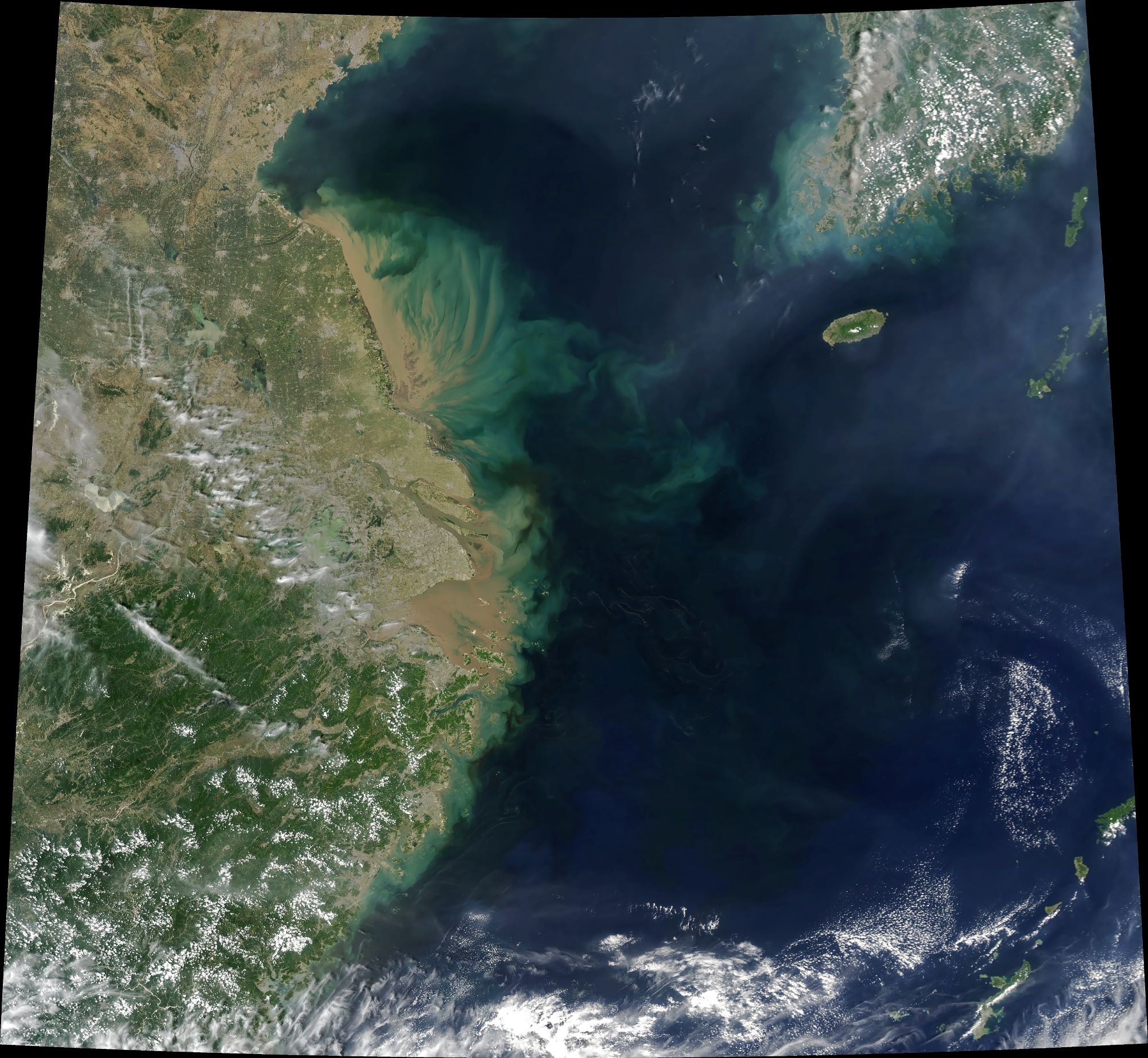[:ja]NASAの地球観測衛星Aquaが撮影した東シナ海、中国の上海沖に波線上に青く広がるヤコウチュウです。

ヤコウチュウ(夜光虫、Noctiluca scintillans)は、海洋性のプランクトンです。大発生すると夜に光り輝いて見えることからこの名が付きましたが、昼には赤潮として姿を見せます。原生生物としては非常に大きく、巨大な液胞で満たされた細胞は直径1~2mmに達します。外形はほぼ球形で、1ヶ所でくぼんだ部分があります。
ヤコウチュウの光る様子はこちらです。

参考文献: Tracking “Blue Tear” Blooms (NASA Earth Observatory)
地球俯瞰画像を見る: LiVEARTH
[Earthview Wonders] No.1140: Phytoplankton of East China Sea🇨🇳
NASA’s Aqua satellite captured the spread of Noctiluca scintillans, a type of phytoplankton in the East China Sea off the coast of Shanghai, China.

Noctiluca scintillans, single-celled organisms and a type of dinoflagellate phytoplankton, sparkles at night with an ethereal blue glow, especially after boats, waves, or even swimmers disturb the water. These bioluminescent organisms aggregate or grow into very high concentrations, they can form massive “red tides” that can harm marine life and create dead zones despite the beauty of these “blue tear” blooms.
The local scenery on the ground is as follows.

Reference: Tracking “Blue Tear” Blooms (NASA Earth Observatory)
See earthview photo gallery: LiVEARTH[:en][Earthview Wonders] No.1140: Phytoplankton of East China Sea🇨🇳
NASA’s Aqua satellite captured the spread of Noctiluca scintillans, a type of phytoplankton in the East China Sea off the coast of Shanghai, China.

Noctiluca scintillans, single-celled organisms and a type of dinoflagellate phytoplankton, sparkles at night with an ethereal blue glow, especially after boats, waves, or even swimmers disturb the water. These bioluminescent organisms aggregate or grow into very high concentrations, they can form massive “red tides” that can harm marine life and create dead zones despite the beauty of these “blue tear” blooms.
The local scenery on the ground is as follows.

Reference: Tracking “Blue Tear” Blooms (NASA Earth Observatory)
See earthview photo gallery: LiVEARTH[:]